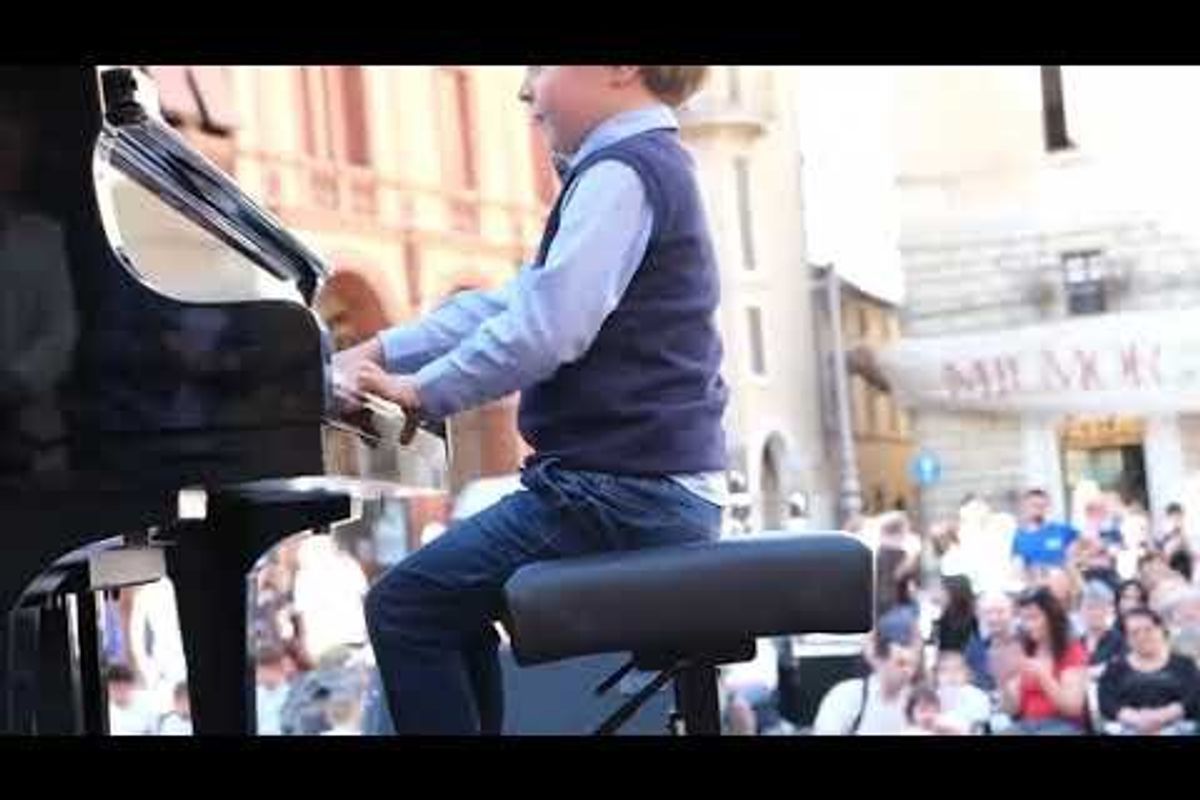Watch a 5-yr-old Italian piano prodigy blow away the crowd with his extraordinary ability
Alberto has talent beyond his years.

Alberto Cartuccia Cingolani wows audiences with his amazing musical talents.
Mozart was known for his musical talent at a young age, playing the harpsichord at age four and writing original compositions at age five. So perhaps it's fitting that a video of five-year-old piano prodigy Alberto Cartuccia Cingolani playing Mozart has gone viral as people marvel at his musical abilities.
Alberto's legs couldn't even reach the pedals, but that didn't stop his little hands from flying expertly over the keys as incredible music pours out of the piano at the 10th International Musical Competition "Città di Penne" in Italy in 2022. Even if you've seen young musicians play impressively, it's hard not to have your jaw drop. Sometimes a kid comes along who just clearly has a gift.
Of course, that gift has been helped along by two professional musician parents, but no amount of teaching can create an ability like this.
Alberto first started playing in 2020 in the early months of the COVID-19 pandemic. Italy was one of the first countries to experience a serious lockdown, and Alberto's mother used the opportunity to start teaching her son to play piano. Alessia Cingolani and her husband Simone Cartuccia are both music conservatory graduates, and mom Alessia told Italian entertainment website Contrataque that she and her husband recognized Alberto's talent immediately.

She said that although Alberto spends a lot of time at the piano, he also has plenty of time for school and play and television, like a normal kid.
There's genuinely nothing "normal" about this kid's piano playing, though. Watch him playing a piece by Edvard Grieg in front of a crowd in Italy at age five:
- YouTube www.youtube.com
Wow, right? There are countless adults who took years of piano lessons and never got to that level of playing.
According to Corriere Adriatico, by the time he was four and a half years old, Alberto had participated in seven national and international online competitions and won first place in all of them. His mother told the outlet that he started out practicing for about 10 minutes a day and gradually increased to three hours.
"He has a remarkable flair for the piano," she said. Um, yeah. Clearly.
Some commenters expressed some concern for the boy based on his seriousness and what looks like dark circles under his eyes in the competition video, but if you check out other videos of Alberto playing at home, he is more relaxed. In interviews, his mother has made it clear that they prioritize normal childhood activities.
Alberto also plays with other musicians. Watch him playing Haydn along with a small orchestra at age eight in 2025:
- YouTube www.youtube.com
Where musical ability comes from continues to be somewhat of a mystery, and experts frequently debate how much is due to nature and how much is due to nurture. Some argue that anyone can develop musical skills with enough practice and a supportive environment, but sometimes a kid clearly displays an innate musical sensibility that defies explanation. Some children are just genuine prodigies, and Alberto certainly seems to fit that bill. Can't wait to see what kind of musical future awaits him.
This article originally appeared three years ago and has been updated.

